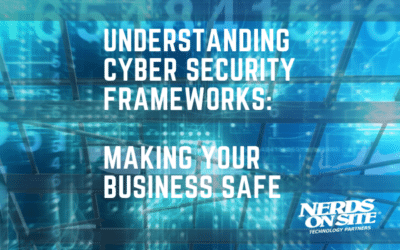Smishing is a new form of phishing that uses text messaging instead of email. It’s a growing problem worldwide, happening over 30 million times per day!
Article Contents
Smishing scammers try to trick you into giving personal information by pretending to be a trusted person or business. They might ask for your name, email address, credit card number, or even money in some cases.
Many people are aware of email scams and what to look for, but not as many are aware of how to prevent smishing attacks. Text messages have a higher response rate than emails, making it easier for these scams to work.
Keep reading to learn how to spot smishing scams and what you can do to protect yourself.
How To Spot A Smishing Scam
There are several red flags to look for when you receive a text message from an unknown number:
The phone number looks suspicious.
Smishing messages often come from numbers that do not look like standard phone numbers (for example, 555-55).
The text indicates there is something wrong.
Often the message will say there is something wrong with one of your accounts, like a bank account or credit card.
The text includes a link or phone number.
A smishing text message will often include a phone number to call, a link to a website, or a link to download an app.
The text asks you to reply with personal information.
Smishing text messages may ask you to reply directly to the text with personal information. A trusted company such as the government, a bank, or even a retailer you often shop with will never ask for personal information through text message
How To Protect Yourself From Smishing Attacks
1. Don’t reply to text messages from people you don’t know.
A good practice is to not respond to text messages from people you don’t know—this is the easiest way to prevent being scammed.
2. Pay attention to the phone number.
If the number looks suspicious, don’t reply. If the number looks legitimate but isn’t known to you or stored in your contacts, be wary of responding.
3. Always use a different method to check your accounts.
There are more ways to check on your account(s) than responding to a text message. If the sender says they are a company or organization you have an account with, contact that business directly by phone to confirm if there is a problem.
4. Don’t click on links unless they come from an individual you know.
Generally speaking, links sent from friends and personal contacts are safe. If a text message from an unknown sender contains a link, do not open it.
5. Don’t install apps by clicking on a link in a text message.
Avoid downloading apps to your phone from links provided in text messages. Always download apps from the app store on your device.
6. Don’t provide sensitive information via text message.
Even if someone you know is asking for information over text message, verify the person is who they say they are and ask questions they should know the answers to. If you can trust the person, phone them directly instead of providing the information through text.
7. Block the number.
If you receive a suspicious text message, block the number. This will prevent that same number from contacting you again in the future.
Err On The Side Of Caution
In a world where quick fixes to problems are the norm, avoid the urge to respond to text messages that ask for personal information. What seems to be a simple fix to a problem can end up being a very costly mistake.
If you think you have been a target of fraud or have already engaged with a scammer, report the scam to your local police service immediately.
It only takes one smishing text message to jeopardize your security but with a little bit of caution, you can make sure you don’t become a victim of a smishing scam. Watch the following video by CNET, a global leader in tech news, to learn more about smishing and how you can protect yourself.












